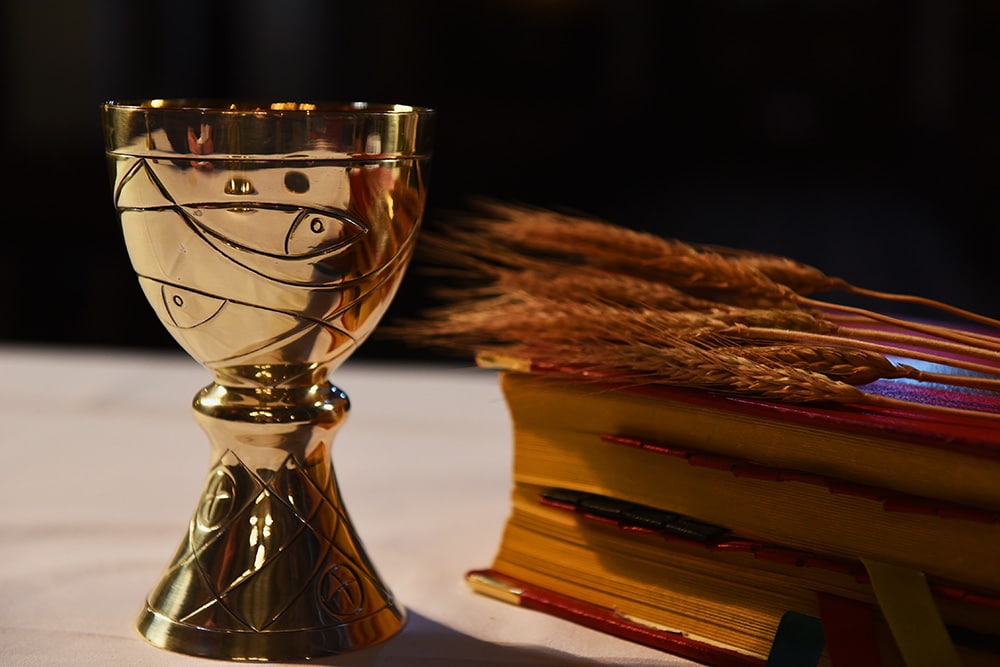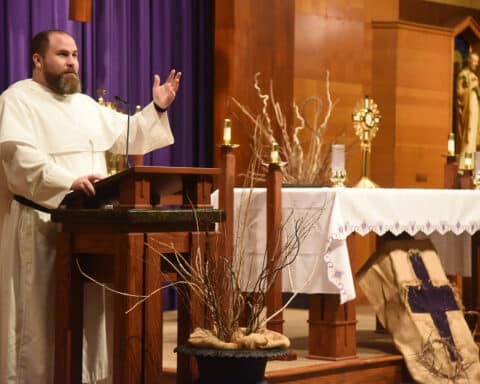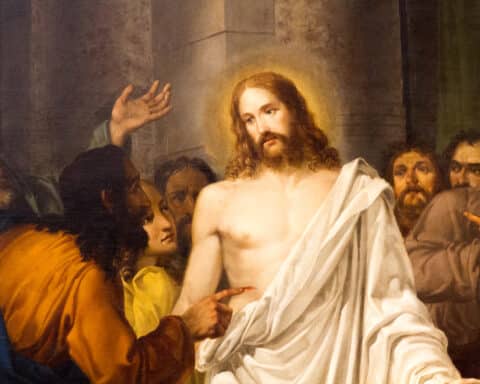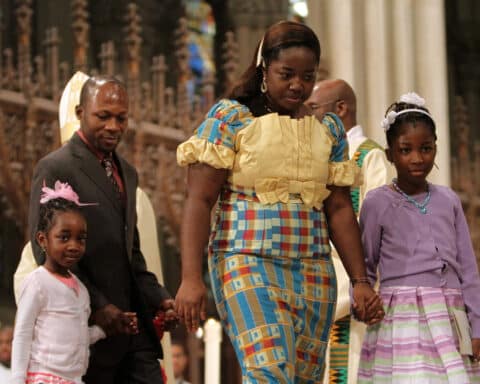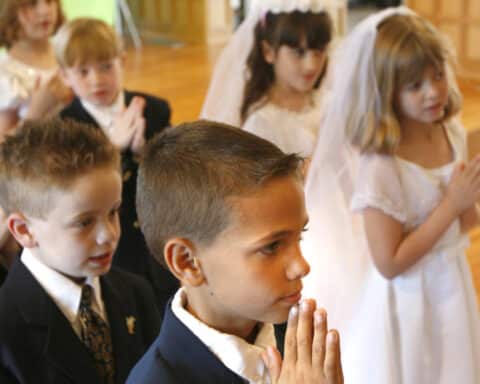Question: During the consecration of the precious blood, the priest says “… which will be poured out for you and for many ….” Didn’t Christ shed his blood for all? Also, why is this language only used at the consecration of the blood and not the body?
— Tim Atzinger, Ann Arbor, Michigan
Answer: The words of consecration at Mass are drawn from the words used by Christ at the Last Supper. For example, Matthew’s account reads as follows: “While they were eating, Jesus took bread, said the blessing, broke it, and giving it to his disciples said, ‘Take and eat; this is my body.’ Then he took a cup, gave thanks, and gave it to them, saying, ‘Drink from it, all of you, for this is my blood of the covenant, which will be shed on behalf of many for the forgiveness of sins'” (Mt 26:26-28). The current English translation reflects the Latin text where the key words that pertain to your question are pro multis (for many). A previous English translation rendered the text “for all,” but this did not accurately render the Latin and, hence, the change to the current reading was made.
While it is true that Jesus’ will was to die for all and make a universal offer of salvation, it is also true that not everyone accepts the invitation to repent and believe the Gospel. Thus all are summoned, but only a good many, but not all, respond with faith. The text reflects this reality.
It is also good to point out that “many” here can be understood as “the many” or “the multitude.” So the text can be understood to mean, “This is the chalice of my blood which will be poured out for you and for the many, so that sins may be forgiven.” The original Greek word is polýs — meaning many; a group high in number; multitudinous, plenteous, or great in amount or extent.
As to why Jesus uses the word “many” only in reference to the chalice, one should remember that his action, though in two parts (the words over the bread and then the wine) is really one action. Hence “many” can refer to both species of the Eucharist; his body and his blood are offered for the many.
Liturgy of the Hours
Question: My question has to do with the Liturgy of the Hours, specifically the single book of Christian Prayer. I was really wondering about the history of it. Also, who selected all the readings and hymns and who composed the prayers? I know that a lot of laypeople are learning about saying morning and evening prayer and finding it very helpful.
— Mary Seltzer, Deming, New Mexico
Answer: The breviary or Divine Office, also called today the Liturgy of the Hours, is a cycle of prayers, primarily consisting of the psalms, but also containing readings from Scripture and the Church Fathers, hymns and intercessory prayers. It is divided into four parts according to the seasons of the year: winter, spring, summer and fall.
It has undergone many developments and changes over the centuries and has varying forms according to different monastic traditions. The full breviary had the monks and clergy pray at seven different times or (hours) each day: matins (usually at 2 a.m.), lauds (in the morning), terce (9 a.m.), sext (noon), none (3 p.m.), vespers (6 p.m.) and compline (bedtime). Most of the hours consist in the reading of several psalms, a reading from Scripture, some antiphons and responses and a prayer. Lauds and vespers are longer than the others. Matins features two longer readings.
As already stated, the exact selection of psalms and other aspects has varied over the centuries. In our own era, Pope Pius X made significant changes to the breviary. After the Second Vatican Council, the breviary was again changed, shortened and simplified. Whereas the preconciliar breviary covered all 150 psalms in a week, the new one divided them out over a four-week cycle and added psalm-like canticles from other parts of Scripture. The overall effect of the new breviary (Liturgy of the Hours) is that more Scripture is included but the actual recitation on a daily basis is shortened. This was deemed pastoral for busy parish priests who did not always have the simple and structured life of the monks. Today there are some who prefer the older breviary, and it is permitted for them to pray it.
The hymns and prayers contained in the breviary are quite ancient, many of them dating back to the early days of the Church.
Msgr. Charles Pope is the pastor of Holy Comforter-St. Cyprian in Washington, D.C., and writes for the Archdiocese of Washington, D.C. at blog.adw.org. Send questions to msgrpope@osv.com.

